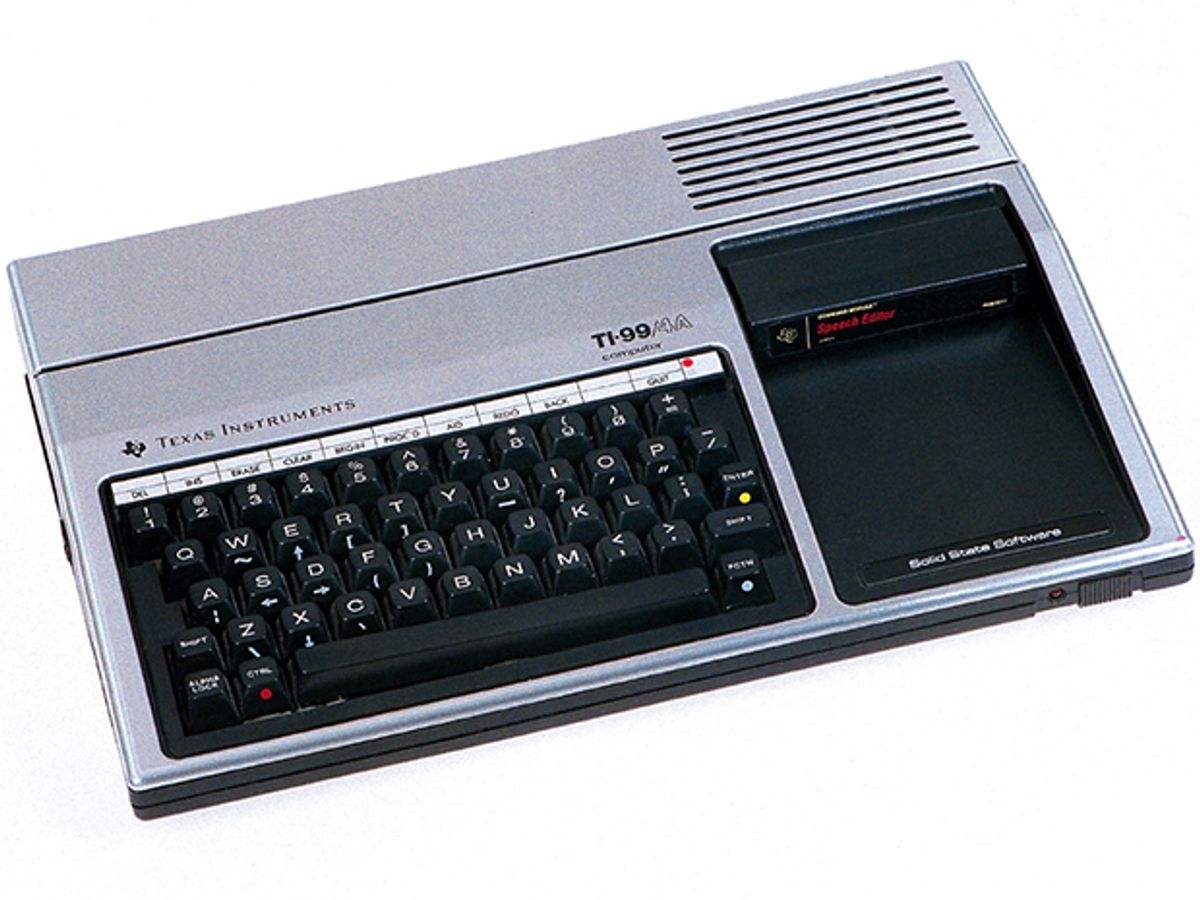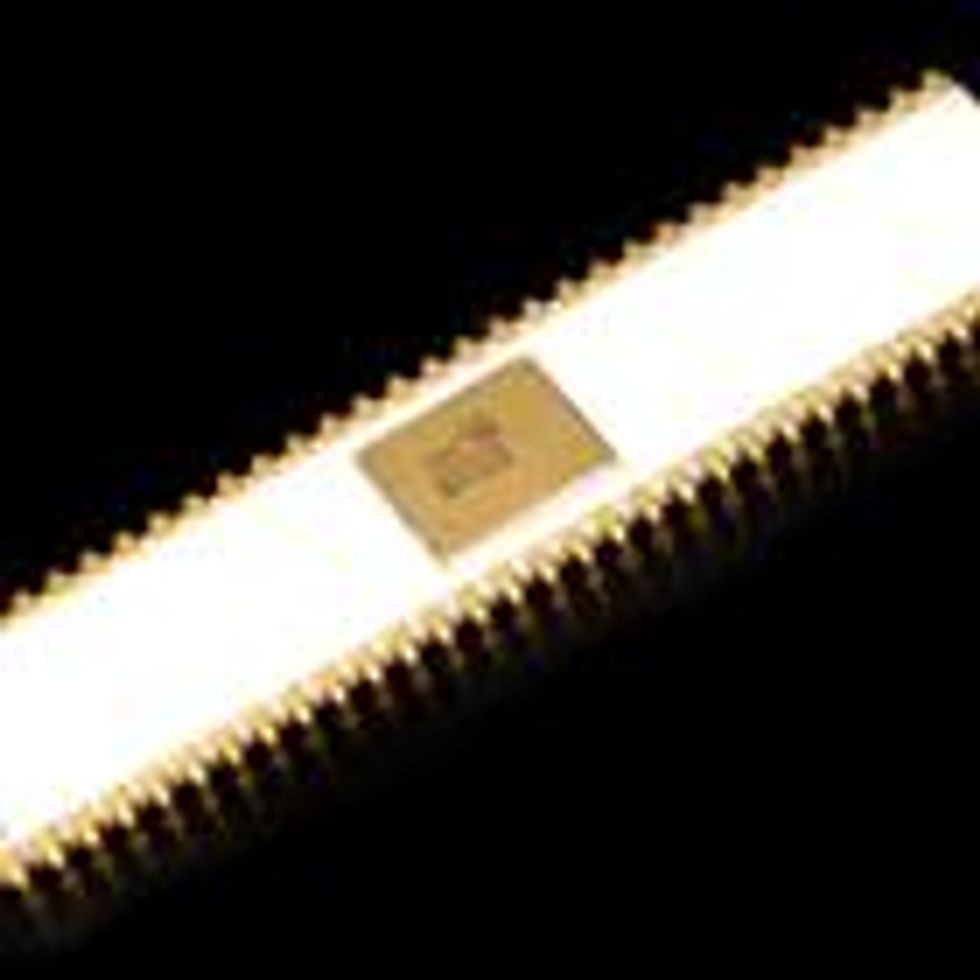The Texas Instruments 99/4: World’s First 16-Bit Home Computer
How a desire for corporate synergy gave rise to the “embarrassing” TI 99/4

In the late 1970s, personal computers were starting to take off, with plenty of options from an array of companies. The Altair 8800 was an early entrant, popular among techie users and developers. Others, including Radio Shack's TRS-80 (referred to by its critics as the Trash 80), the Apple I and II, and the Commodore PET, sold to a more mainstream set of customers.
Industry watchers expected TI to have a big impact on the market—if it managed to introduce a competitive product. By 1977, TI engineers were hard at work on not just one computer design but three: 1) a low-end video game console intended to sell for under US $200, with games stored on ROM cartridges; 2) a personal computer aimed at hobbyists and users of Radio Shack and Apple computers; and 3) a high-end business computer with nearly 10 megabytes of hard disk storage.
As tends to happen in large companies, turf wars broke out. The boundary between the video game and home computer groups, both of which were competing for resources in TI's facility in Lubbock, Texas, began to grow fuzzy. Meanwhile, the business computer's intended market clearly overlapped with that of the minicomputer and portable terminal products, which came out of TI's Data Systems Division. Ultimately, the video game and personal computer efforts merged, and the business computer was moved to the Data Systems Division, where it was viewed with hostility and subsequently killed.
The surviving home computer group, whose product was now known as the 99/4, started receiving lots of corporate “help," including pressure to use TI's troubled 16-bit TMS9900 microprocessor. Peter van Cuylenburg, who was in TI's European marketing division, came up with an innovative solution to this corporate pressure. He commissioned a third-party contractor to design and build a personal computer, code-named “Mojo," using only chips made by TI. The contractor used TI's version of the Intel 8080A in addition to lots of TI TTL, memory, and other components.
While Mojo sort of solved the desire for corporate synergy between the company's semiconductor and consumer products groups, the TMS9900 was more genuinely a TI microprocessor. And so after a series of discussions and compromises, the Mojo idea was discarded, and the 99/4 ended up using the TMS9900 as well as the TMS9918 graphics chip. The 99/4 also ended up with a combination of features from the original video game design (including an ultracheap keyboard, RF clips to attach to a TV set, and ROM-based applications).
When the 99/4 finally emerged in 1979, having somehow transcended three sets of TI management, it received mostly disparaging reviews. Benjamin M. Rosen of Morgan Stanley, who was then the leading semiconductor analyst and fast becoming the leading personal computer analyst as well, wrote a humorous article about the disappointment of what was expected to be a major contender in the personal computer business. A revised version, the TI-99/4A was released in 1981 with a better keyboard, but it wasn't enough: In 1983, the New York Times called the 99/4 “an embarrassing failure."

Despite being the world's first 16-bit home computer, the 99/4, like the microprocessor on which it was based, was a dog. Intended to satisfy two very different markets, the 99/4 and 99/4A served neither one well. Unsurprisingly, initial sales were weak. By 1982 Commodore had initiated a price war with its VIC-20 computer, forcing TI to first offer $100 rebates and eventually slash the price from an initial $1,150 to an unsustainable $49. The price war was an incredible boon to consumers, because it made personal computers affordable to a much wider market. TI saw sales of the 99/4A explode, eventually reaching 2.8 million units.
But the 99/4 and 99/4A were expensive to build, and the company lost money on each home computer it sold. One reason they cost so much to build was the high cost of the TMS9900's unconventional packaging. Specifically, the large number of connecting pins for a 16-bit microprocessor forced TI to develop its own packaging technology. By the time others entered the 16-bit microprocessor market, standard packaging configurations had been developed to overcome this problem.

The 9900 also had some performance issues because of its unique “memory to memory" architecture, which used off-chip memory instead of on-chip registers, thus slowing performance. The lower-cost TMS9995 chip that followed the TMS9900 overcame some of these problems with an on-chip register file cache, but there was no easy way to substitute the TMS9995 for the TMS9900 in the TI-99/4 architecture.
Meanwhile, most third-party software developers remained reluctant to invest in programs for the 99/4A. As demand for the 99/4A soared, TI initiated a crash program to ramp up production. But it couldn't compete with Commodore, which had a low-cost design and continued to lower the prices for its computers even further. Just as TI's production output took off, demand for the 99/4A began to fade. In 1983 the company took a massive write-off of $330 million, and it abandoned the home computer business the following year. Ironically, by then the TI machine had a devoted following among users who had purchased the 99/4A because they couldn't resist its low price. Remnants of that cult still exist today.
Interestingly, the TMS9918 graphics controller used in the 99/4 series found broad usage in the MSX standard for home computers, which also used a Zilog Z80 microprocessor and the CP/M operating system from Digital Research. The MSX architecture was the brainchild of Kazuhiko Nishi, who founded a publishing company called ASCII Corp., which later became ASCII Microsoft. The TMS9918 graphics chip, designed by TI's Karl Guttag, was central to the MSX standard and eventually was used in products from game manufacturers like Coleco and Sega, as well as Sony, Yamaha, and Toshiba. Had the IBM PC never come along, the MSX standard might have been much more broadly adopted.


